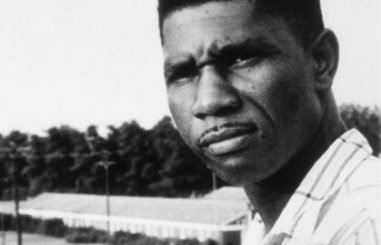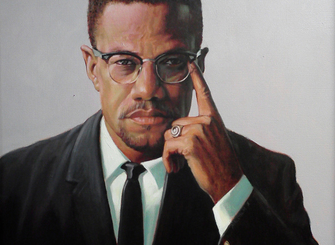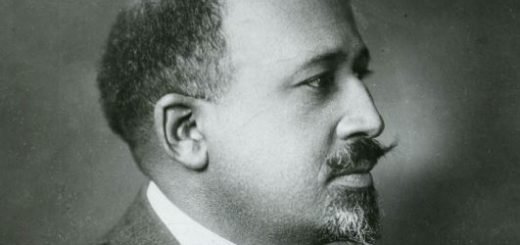Martin Luther King Jr.- Life, Civil Rights Campaigns & Death
Hardly is there any American who did more civil rights work in the entirety of the 20th century than Martin Luther King Jr. Born on 15th January 1929, Luther King Jr. went on to become a Baptist Minister and a civil rights activist. In 1963, he organized a march in Washington and delivered his famous speech titled, ”I Have a Dream”. Luther King Jr. ‘s sole purpose in life was to ensure that all U.S. citizens had equal rights, including African-Americans.
His peaceful approach in demanding rights was what got the world mourning when he was brutally assassinated in 1968. In today’s piece, we will be looking at the life, civil rights works and the death of America’s finest civil rights activist- Martin Luther King Jr.
Birth, Early life and Education
As stated above, this civil rights hero was born in 1929 in Atlanta, Georgia. Luther King’s father was Martin Luther King Sr. (a reverend) and his mum was Alberta Williams King (a former teacher). Martin Luther Sr. changed his original first name and that of his son from Micheal to Martin. Growing up in a religious family, Luther King Jr. joined the church when he was 15.
His mum was a great organist. King Jr. ’s protestant life was largely influenced by his father (King Sr.) who spoke out against racial segregation and institutional racism in America. He once narrated a childhood story about how his dad refused to obey a traffic policeman when the cop referred to him as “boy”. King Jr. recounted that he lost his white childhood friends because he wasn’t allowed to attend the same school with them. All throughout his early education, King Jr. attended segregated African-American schools.
The racial discrimination in the US at that time made King Jr. suffer from several bouts of depressions. Tired with humiliation against blacks, King Jr. survived a suicide attempt when he jumped out of a story-building at the age of 12.

Martin Luther King Jr. had incredible public speaking abilities.
In his early teens, he entered the seminary. His oratory abilities were evident even when he was at the Booker T. Washington High School. He honed his talents and skills in public speaking and debate. His brilliance made him skip the 9th and 12th grades of High School.
Luther King Jr. obtained a BA. Sociology from Morehouse College. He continued his higher education at Boston University where he obtained a PhD. in Systematic Theology. Luther met his wife Coretta Scott at Boston. They got married and produced four children.
Bus Boycott at Montgomery
In March of 1955, a young African-American girl (Claudette Colvin) of about 15 years old, violated the Jim Crow Law when she refused to offer her seat on a bus to a white passenger. This controversy spewed over and became a full-blown civil case at a state court.
Since the case involved a minor, Luther King Jr and E. D Nixon who were part of the committee tasked to oversee the case. The two activists waited patiently for another mature instance in order to get the momentum going. Lo and behold, In December 1955, Rosa Parks was arrested for violating the same segregated bus seats policy. E. D Nixon and Luther King handled the case by staging a mass boycott of buses in Montgomery for 385 days.
The boycott became a huge economic blow to the public transport authorities and business owners. Luther King was arrested for leading the bus boycott. In November 1956, the US Supreme Court finally ruled against segregated seats on public buses. This ruling catapulted King’s reputation and made him an instant hero to black communities.
It also made him an arch-enemy and threat to the white supremacist and their movements. These supremacists’ groups took several life-threatening jabs at Luther King and his followers. One of this threat came when a bomb was detonated at the residence of Luther King.
Read More:
Southern Christian Leadership Conference (SCLC)

King Jr. worked together with some Christian activists to set up the SCLC.
When he achieved his first major national recognition, Luther King Jr. worked with other Christian activists to form the Southern Christian Leadership Conference (SCLC). Their goal was to use nonviolent means to request for social, political and economic equality for African-Americans. It was that simple. Their motto read: “Not one hair of one head of one person should be harmed”.
As the President of the SCLC, Luther King preached equality everywhere he went. He traveled around the world and met with religious and political leaders. King gave lectures and several speeches on civil rights and racial integration at churches, campuses and at nonviolent protests. He even traveled to India and met with followers of his role model: Mahatma Gandhi. Luther King also wrote a lot of books and articles around that time.
Campaign in Birmingham
Luther King and his SCLC members took their campaigns to Birmingham, Alabama – one of the most racially divided and segregated cities in America at that time. He and his supporters used confrontational tactics to get their demands for justice heard. Blacks in Birmingham cooperated with the SCLC and marched in public places.
This move openly violated some of the state laws at that time. The momentum was so intense that children were called to join some of the protests. Seeking to nip these protests in the bag, the Birmingham police used dogs and water jets to disperse the crowd.
Footage of the police brutalizing children drew sympathy from diverse sections of the American public. King Jr. was arrested and jailed during the early phase of the campaign. While in his cell, he wrote a famous letter to respond to critics of their civil disobedience.
The SCLC campaigns and protests will go down in history as the actual turning point in the battle for civil liberties and institutional changes. Across several states in the U.S.A., public places and institutions gradually started admitting blacks. However, the battle wasn’t over yet. There were still patches of strong resistance to racial integration. This and many more incidents at that time resulted in the civil rights movement and leadership upping the tempo. One example of such moves occurred in Washington D.C.
The Washington March
Luther King Jr. organized a popular March in Washington with support from civil rights groups and religious organizations. About 200 to 300 thousand people participated in the march for freedom, jobs and civil rights. Their efforts paid off. The American Civil Rights Act of 1964 was passed, thanks to his protests.
Martin Luther King’s Famous Speech- I have a Dream
Luther King delivered a powerful oration when he addressed participants of the Washington March. He stood on the steps of the Lincoln Memorial and envisioned an America where all men are created equal.
The speech earned him, Time Magazine’s Man of the Year honor. He also received the Nobel Prize in 1964. This etched him into the history annals as being the youngest person to be honored with that award at that time (17-year-old Malala Yousafzai of Pakistan later claimed that enviable honor in 2014).
Luther King and SCLC also took part in the March from Selma to Montgomery. This pushed the US Congress to pass the Voting Rights Act on August 4, 1965. The Voting Rights Act of 1965 that it granted all African Americans the right to vote in all U.S. state and federal elections. Please visit this link to read more about the spectacular achievements of Martin Luther King Jr.
Here is a video of Martin Luther King’s renowned speech- I have a dream:
Martin Luther King’s Death
Luther King’s final reward from extremist sections of America was hot death. After fighting so hard for blacks, King Jr. had amassed a fair share of racist enemies. He was shot dead on the evening of 4th April 1968. His assailant (James Earl Ray) was an ex-convict and a racist. For his barbaric act, James Ray was sentenced to 99 years in prison.
In 1983, President Reagan signed a bill and created a national holiday (3rd Monday of January) to honor the life and legacy of Martin Luther King, Jr.



























